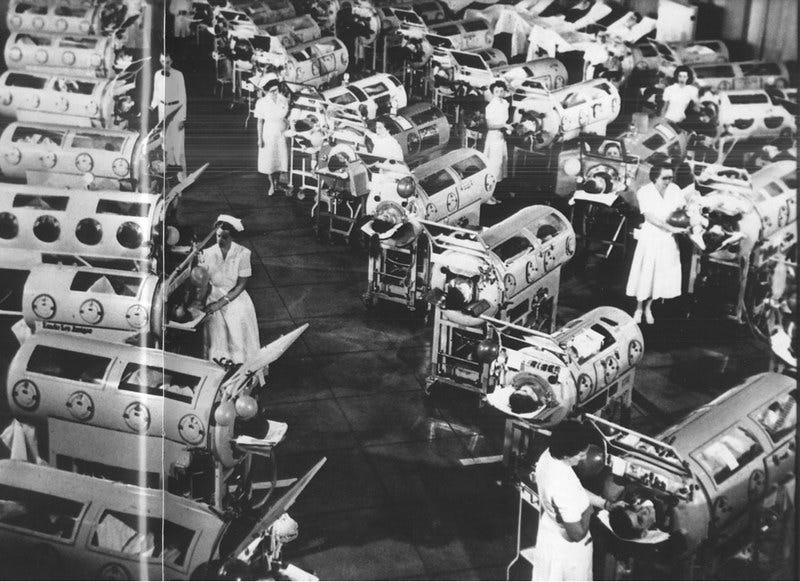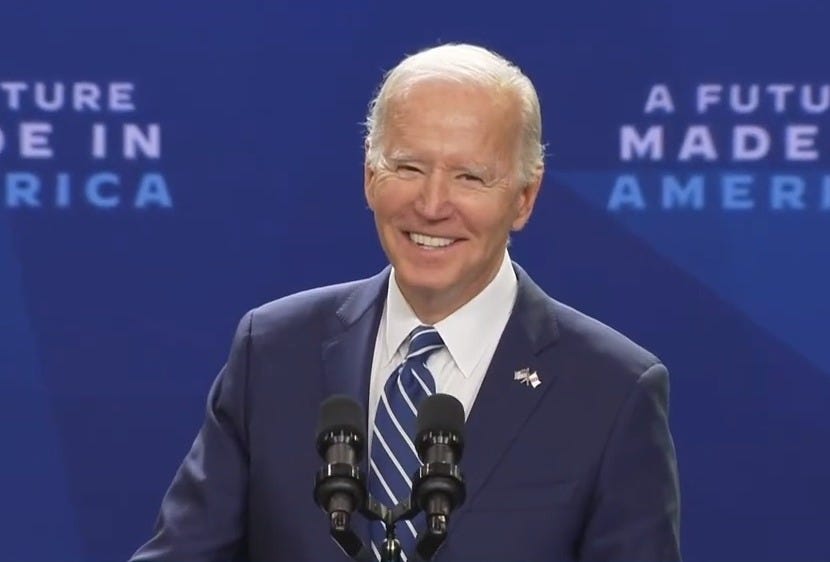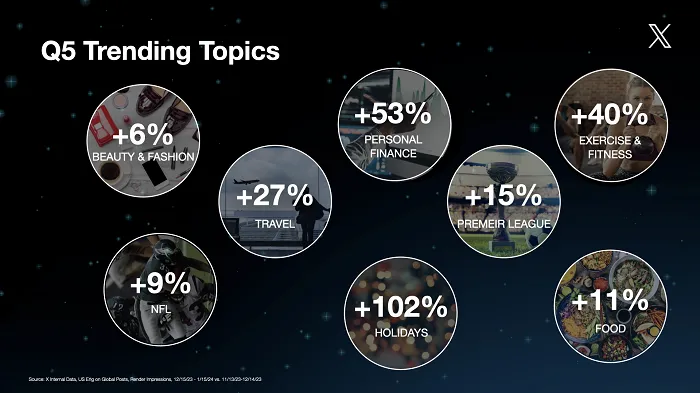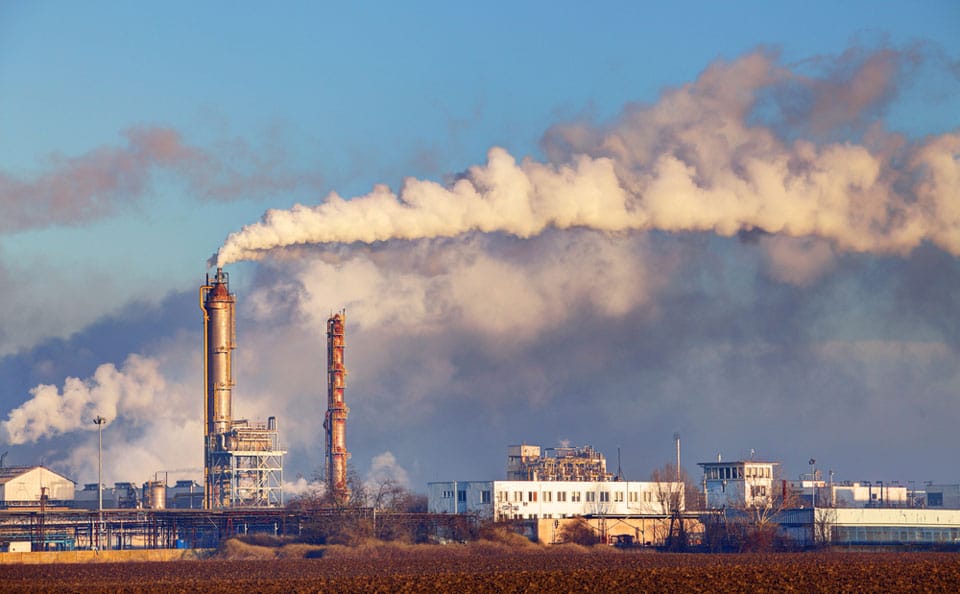Air pollution is a leading cause of death worldwide. You might be curious about the location of the world’s cleanest air.
As the climate crisis continues to worsen, countries with a reputation for clean air are rapidly working towards achieving net-zero carbon emissions by 2050. However, this ambitious goal will require significant investments in renewable energy sources and is complicated by various factors. In this comprehensive analysis, we will explore the details of the global clean energy sector in 2023, including key players, emerging trends, and strategies for success.
Real-time monitoring data analysis has revealed significant disparities in air pollution levels between countries as climate change exacerbates the problem. According to the report, Iceland boasts the cleanest air in the world, with a PM2.5 concentration of 3.4 micrograms per cubic meter. Conversely, Chad was found to have the most polluted air, with PM2.5 concentrations of 89.7. On the other hand, Cambodia had the lowest PM2.5 concentrations among Asian nations, measured at 8.3 micrograms per cubic meter.
Iceland has the cleanest air in the world, followed by Grenada, with Australia in third. The highest-ranked European countries are Iceland (1st), Estonia (6th), Finland (7th), Andorra (8th), and Sweden (9th). At the other end of the spectrum, Chad has the worst air quality, followed by Iraq, Pakistan, Bahrain, and Bangladesh, respectively.
Iceland’s Green Energy Dominance: Iceland emerges as a global leader in renewable energy, with an astounding 99% of its energy production sourced from renewable means. Geothermal energy and hydropower are the cornerstones of Iceland’s sustainable energy landscape, with ambitions to achieve 100% carbon neutrality by 2040. Grenada’s Aspirations for Solar and Wind Power: Though primarily reliant on fossil fuels for electricity generation, Grenada has set ambitious goals to transition to renewable energy sources. By 2030, the nation aims to derive at least 50% of its energy from solar and wind power.
Australia’s Multifaceted Renewable Energy Mix: Australia has embraced diverse renewable energy sources, including wind, hydroelectricity, solar, and geothermal power. As of 2022, over 43% of the country’s electricity was generated from renewables, making substantial strides towards cleaner energy production. New Zealand’s Hydropower and Geothermal Dominance: New Zealand prioritizes renewable energy, with 82% of its electricity sourced from renewable means, chiefly hydropower and geothermal power. Solar power is also gaining popularity, promising a bright future for clean energy.
Countries With the Cleanest Air in the World (and the Dirtiest), 2024
| Rank | Country/Region | Average PM2.5 concentration | Population |
|---|---|---|---|
| 1 | Iceland | 3.4 | 372520 |
| 2 | Grenada | 3.8 | 124610 |
| 3 | Australia | 4.2 | 25688079 |
| 4 | Puerto Rico | 4.3 | 3263584 |
| 5 | New Zealand | 4.8 | 5122600 |
| 6 | Estonia | 4.9 | 1330932 |
| 7 | Finland | 5 | 5541017 |
| 8 | Trinidad and Tobago | 5.1 | 1525663 |
| 9 | Andorra | 5.4 | 79034 |
| 10 | Belize | 5.6 | 400031 |
| 11 | Sweden | 6.2 | 10415811 |
| 12 | Suriname | 7 | 612985 |
| 13 | Norway | 7 | 5408320 |
| 14 | Bolivia | 7.3 | 12079472 |
| 15 | Luxembourg | 7.4 | 640064 |
| 16 | Canada | 7.4 | 38246108 |
| 17 | Ireland | 7.5 | 5033165 |
| 18 | Argentina | 7.7 | 45808747 |
| 19 | Costa Rica | 7.9 | 5153957 |
| 20 | Portugal | 8.1 | 10325147 |
| 21 | Cambodia | 8.3 | 16589023 |
| 22 | Liechtenstein | 8.3 | 39039 |
| 23 | Denmark | 8.6 | 5856733 |
| 24 | Angola | 8.8 | 34503774 |
| 25 | United States | 8.9 | 331893745 |
| 26 | Nicaragua | 8.9 | 6850540 |
| 27 | United Kingdom | 8.9 | 67326569 |
| 28 | Panama | 9 | 4351267 |
| 29 | Japan | 9.1 | 125681593 |
| 30 | Ukraine | 9.7 | 43792855 |
| 31 | Switzerland | 10 | 8703405 |
| 32 | Latvia | 10.1 | 1884490 |
| 33 | Honduras | 10.2 | 10278345 |
| 34 | Austria | 10.6 | 8955797 |
| 35 | Belgium | 10.8 | 11592952 |
| 36 | Spain | 10.9 | 47415750 |
| 37 | Maldives | 10.9 | 521457 |
| 38 | Netherlands | 11 | 17533044 |
| 39 | Germany | 11 | 83196078 |
| 40 | Russia | 11.2 | 143449286 |
| 41 | Uruguay | 11.3 | 3426260 |
| 42 | Kenya | 11.5 | 53005614 |
| 43 | France | 11.5 | 67749632 |
| 44 | Malta | 11.7 | 518536 |
| 45 | Brazil | 12.2 | 214326223 |
| 46 | Guyana | 12.6 | 804567 |
| 47 | Hungary | 12.6 | 9709891 |
| 48 | Lithuania | 13.2 | 2800839 |
| 49 | Singapore | 13.3 | 5453566 |
| 50 | Czech Republic | 13.4 | 10505772 |
| 51 | Taiwan | 13.4 | 23816775 |
| 52 | El Salvador | 14.2 | 6314167 |
| 53 | Slovakia | 14.5 | 5447247 |
| 54 | Hong Kong SAR | 14.5 | 7413100 |
| 55 | Albania | 14.5 | 2811666 |
| 56 | Kosovo | 14.7 | 1786038 |
| 57 | Philippines | 14.9 | 113880328 |
| 58 | Slovenia | 15.1 | 2108079 |
| 59 | Macao SAR | 15.4 | 686607 |
| 60 | Democratic Republic of the Congo | 15.5 | 95894118 |
| 61 | Cyprus | 15.6 | 1244188 |
| 62 | Colombia | 15.7 | 51516562 |
| 63 | Montenegro | 15.7 | 619211 |
| 64 | Poland | 16.3 | 37747124 |
| 65 | Georgia | 17 | 3708610 |
| 66 | Romania | 17.2 | 19119880 |
| 67 | Malaysia | 17.7 | 33573874 |
| 68 | Algeria | 17.8 | 44177969 |
| 69 | Thailand | 18.1 | 71601103 |
| 70 | Bulgaria | 18.3 | 6877743 |
| 71 | South Korea | 18.3 | 51744876 |
| 72 | Guatemala | 18.6 | 17109746 |
| 73 | Israel | 18.8 | 9364000 |
| 74 | Azerbaijan | 18.9 | 10137750 |
| 75 | Italy | 18.9 | 59109668 |
| 76 | Greece | 19 | 10641221 |
| 77 | Mexico | 19.5 | 126705138 |
| 78 | Syria | 20 | 21324367 |
| 79 | Senegal | 20.4 | 16876720 |
| 80 | Sri Lanka | 20.7 | 22156000 |
| 81 | Turkey | 21.1 | 84775404 |
| 82 | Turkmenistan | 21.6 | 6341855 |
| 83 | Chile | 22.2 | 19493184 |
| 84 | Ivory Coast | 22.5 | 29389150 |
| 85 | Moldova | 22.6 | 2615199 |
| 86 | Kazakhstan | 23 | 19000988 |
| 87 | South Africa | 23.4 | 59392255 |
| 88 | Croatia | 23.5 | 3899000 |
| 89 | Peru | 23.5 | 33715471 |
| 90 | Madagascar | 23.7 | 28915653 |
| 91 | Myanmar | 24.3 | 53798084 |
| 92 | Zambia | 24.6 | 19473125 |
| 93 | Serbia | 24.7 | 6834326 |
| 94 | Gabon | 25 | 2341179 |
| 95 | North Macedonia | 25.6 | 2065092 |
| 96 | Vietnam | 27.2 | 97468029 |
| 97 | Laos | 27.6 | 7275556 |
| 98 | Mongolia | 29.5 | 3347782 |
| 99 | Ghana | 30.2 | 32833031 |
| 100 | Indonesia | 30.4 | 273753191 |
| 101 | China | 30.6 | 1412360000 |
| 102 | Kyrgyzstan | 31.1 | 6691800 |
| 103 | Ethiopia | 31.3 | 120283026 |
| 104 | Armenia | 31.4 | 2790974 |
| 105 | Iran | 32.5 | 87923432 |
| 106 | Uzbekistan | 33.5 | 34915100 |
| 107 | Bosnia Herzegovina | 33.6 | 3270943 |
| 108 | Nigeria | 36.9 | 213401323 |
| 109 | Uganda | 39.6 | 45853778 |
| 110 | Nepal | 40.1 | 30034989 |
| 111 | Saudi Arabia | 41.5 | 35950396 |
| 112 | Qatar | 42.5 | 2688235 |
| 113 | Rwanda | 44 | 13461888 |
| 114 | Sudan | 44.6 | 45657202 |
| 115 | United Arab Emirates | 45.9 | 9365145 |
| 116 | Tajikistan | 46 | 9750064 |
| 117 | Egypt | 46.5 | 109262178 |
| 118 | India | 53.3 | 1407563842 |
| 119 | Kuwait | 55.8 | 4250114 |
| 120 | Burkina Faso | 63 | 22100683 |
| 121 | Bangladesh | 65.8 | 169356251 |
| 122 | Bahrain | 66.6 | 1463265 |
| 123 | Pakistan | 70.9 | 231402117 |
| 124 | Iraq | 80.1 | 43533592 |
| 125 | Chad | 89.7 | 17179740 |
Estonia’s Transition Away from Fossil Fuels: Estonia, once reliant on fossil fuels, is diligently transitioning to renewable energy sources. Wind power takes the lead, constituting 65% of the nation’s energy mix, followed by biomass, solar, hydropower, and waste-to-energy initiatives. Finland’s Biomass Dominance: Finland centers its renewable energy strategy on biomass, which accounts for over 40% of primary energy consumption. Other renewables include hydropower, wind, and solar. The nation is committed to sustainable energy practices.
Trinidad and Tobago’s Renewable Energy Pioneering: Trinidad and Tobago embark on a journey to generate 30% of their electricity exclusively from renewable sources by 2030. Various ongoing projects underscore their commitment to cleaner energy production. Andorra’s Path to Net Zero: Andorra is actively advancing towards net-zero targets by fostering a consistent transition to renewable energy sources. Notably, the nation is engaged in projects like the green hydrogen initiative.
Belize’s Investment in Renewable Energy: Over the past two decades, Belize has channeled substantial investments into renewable energy sources. Hydropower, in particular, plays a pivotal role in generating over half of the nation’s electricity. Sweden’s Varied Renewable Energy Portfolio: Sweden harnesses a diverse range of renewable energy sources, including wind, solar, biomass, and geothermal power. In 2023, it shifted its focus from “100% renewable” to “100% fossil-free,” signaling a commitment to nuclear energy.
Norway’s Hydropower Dominance: Norway is renowned for clean energy production, with a heavy reliance on hydropower. Additional renewable sources include wind power and thermal energy, reflecting the nation’s commitment to sustainability. Suriname’s Pursuit of Clean Air: Suriname, despite fossil fuel contributions to electricity generation, maintains clean air due to its relatively low population. The nation aspires to maintain and enhance its environmental standards.
Bolivia’s Embrace of Hydropower and Solar: Hydropower stands as Bolivia’s primary source of renewable energy, followed by solar power. The nation is actively working to alter its energy mix significantly in favor of renewables. Canada’s Leadership in Renewable Energy: Canada is a global leader in renewable energy, with nearly 19% of its primary energy supply derived from renewables. Hydropower constitutes a significant portion of the nation’s electricity production, emphasizing a commitment to sustainability.
Luxembourg’s Impressive Renewable Energy Adoption: Luxembourg leads in renewable energy adoption, with 80% of its electricity generated from sources like hydropower, wind, biomass, and solar power. Wind energy notably contributes to a substantial portion of the nation’s renewable energy production. Ireland’s Wind-Powered Landscape: Ireland embraces renewable energy sources, including wind power, solar power, and biomass. Wind energy takes the lead, catering to 31% of the nation’s electricity needs in 2022.
Argentina’s Transition to Renewables: While natural gas dominates electricity production in Argentina, the nation is steadily increasing reliance on renewable sources like hydropower, nuclear energy, wind energy, and solar power. Costa Rica’s Renewables Supremacy: Costa Rica heavily depends on renewable energy sources, with 98.1% of its electricity generated from renewables, including hydro power, geothermal energy, wind energy, and solar power.
Note: To compile our list of the 30 countries with the cleanest air in the world, we looked at the World Air Quality Report, which ranks countries based on Air Quality. The AQI takes into account pollutants such as PM2.5 (particulate matter with a diameter of 2.5 micrometers or less), nitrogen dioxide (NO2), sulfur dioxide (SO2), carbon monoxide (CO), and ozone (O3) concentration levels. The higher the AQI value in a country, the greater the level of overall air pollution. the World Health Organization issued guidelines that cut acceptable annual exposure to PM2.5 in half, to 5 micrograms per cubic meter of air.
PM2.5 concentrations
5.1-10 (Meets WHO guideline)
10.1-15 (Exceeds by 1 to 2 times)
15.1-25 (Exceeds by 2 to 3 times)
25.1-35 (Exceeds by 3 to 5 times)
35.1-50 (Exceeds by 5 to 7 times)
>50.1 (Exceeds by over ten times)
The report ranks 125 countries and territories by the level of fine particulate matter present in the air.
Portugal’s Diverse Renewable Mix: Portugal leverages a variety of renewable sources, with hydroelectric power leading the way at 28% of total electricity production. The nation is committed to sustainable energy practices. Liechtenstein’s Domestic Renewable Energy Production: Liechtenstein generates a significant portion of its electricity domestically from renewable sources, primarily hydroelectric energy, followed by solar power.
Cambodia’s Multisource Renewables: Cambodia boasts multiple renewable energy sources, including hydropower, solar energy, and biomass. In 2021, 40% of the nation’s energy was generated through renewables. Denmark’s Exemplary Renewable Energy Adoption: In 2022, Denmark saw over 75% of its electricity generated from renewable sources, including wind, bioenergy, solar energy, and hydropower.
Angola’s Hydropower Emphasis: Angola’s energy landscape is dominated by hydropower, contributing 68% to the energy mix. The government actively pursues sustainable projects to increase clean energy production. United Kingdom’s Renewable Energy Drive: The United Kingdom relies on renewable energy sources for 41.4% of its electricity production. Wind power leads the way, accompanied by ocean power, biofuels, solar, and geothermal sources.
Nicaragua’s Abundance of Renewable Energy: Nicaragua boasts an array of renewable energy sources, including biofuel, geothermal, and wind. Geothermal energy contributes significantly, making up 24.6% of all renewable energy in the country. USA’s Diverse Renewable Energy Landscape: While natural gas accounts for over 40% of electricity production in the U.S., the nation is transitioning to cleaner energy sources, including hydroelectric, wind, and solar power. Wind power leads the way, generating over 434 TWh of electricity annually.
Panama’s Hydroelectric and Solar Investments: Hydroelectric energy is the primary source of renewable energy in Panama, with significant investments in solar and wind power underway. Japan’s Commitment to Renewable Energy: Japan generates over 30% of its electricity from renewable sources such as geothermal power, wind, and solar energy. The government actively incentivizes companies to invest in renewables to reduce carbon emissions.
Have you read?
Ranked: Biggest banks in the world in 2023.
These Are The Highest Grossing Films Of The 2023 Worldwide.
Revealed: Top Environmental Innovative US States, 2023.
Report: Best Countries for Cyber Security Professionals, 2023 (Average Salary).
Best CEOs in The Global Video Streaming Industry, 2023.
Ranked: World’s Best-Selling Champagne Brands, 2023.
Add CEOWORLD magazine to your Google News feed.
Follow CEOWORLD magazine headlines on: Google News, LinkedIn, Twitter, and Facebook.
This report/news/ranking/statistics has been prepared only for general guidance on matters of interest and does not constitute professional advice. You should not act upon the information contained in this publication without obtaining specific professional advice.
No representation or warranty (express or implied) is given as to the accuracy or completeness of the information contained in this publication, and, to the extent permitted by law, CEOWORLD magazine does not accept or assume any liability, responsibility or duty of care for any consequences of you or anyone
else acting, or refraining to act, in reliance on the information contained in this publication or for any decision based on it. This publication (and any extract from it) must not be copied, redistributed or placed on any website, without CEOWORLD magazine’ prior written consent.
Copyright 2024 The CEOWORLD magazine. All rights reserved. This material may not be published, broadcast, rewritten, or redistributed. For media queries, please contact: info@ceoworld.biz
SUBSCRIBE NEWSLETTER



























































![LinkedIn Provides Tips on How to Promote Live Events [Infographic] LinkedIn Provides Tips on How to Promote Live Events [Infographic]](https://imgproxy.divecdn.com/kA4YczoBIs8NmPBiERWa-OxzvYMz5kwjjZ6wewP8z7c/g:ce/rs:fit:770:435/Z3M6Ly9kaXZlc2l0ZS1zdG9yYWdlL2RpdmVpbWFnZS9saW5rZWRpbl9ldmVudF9hZHNfaW5mb18yLnBuZw==.webp)








